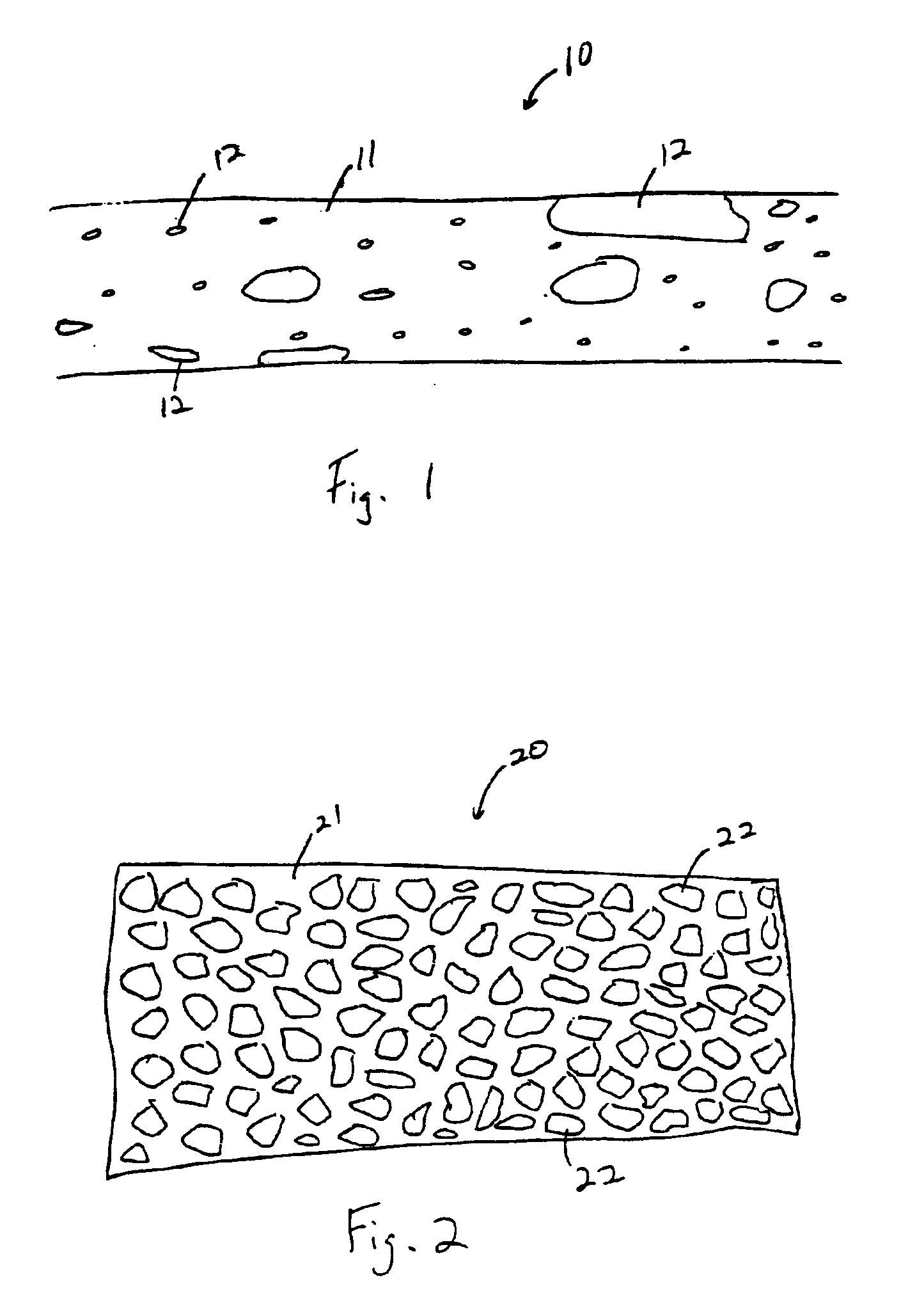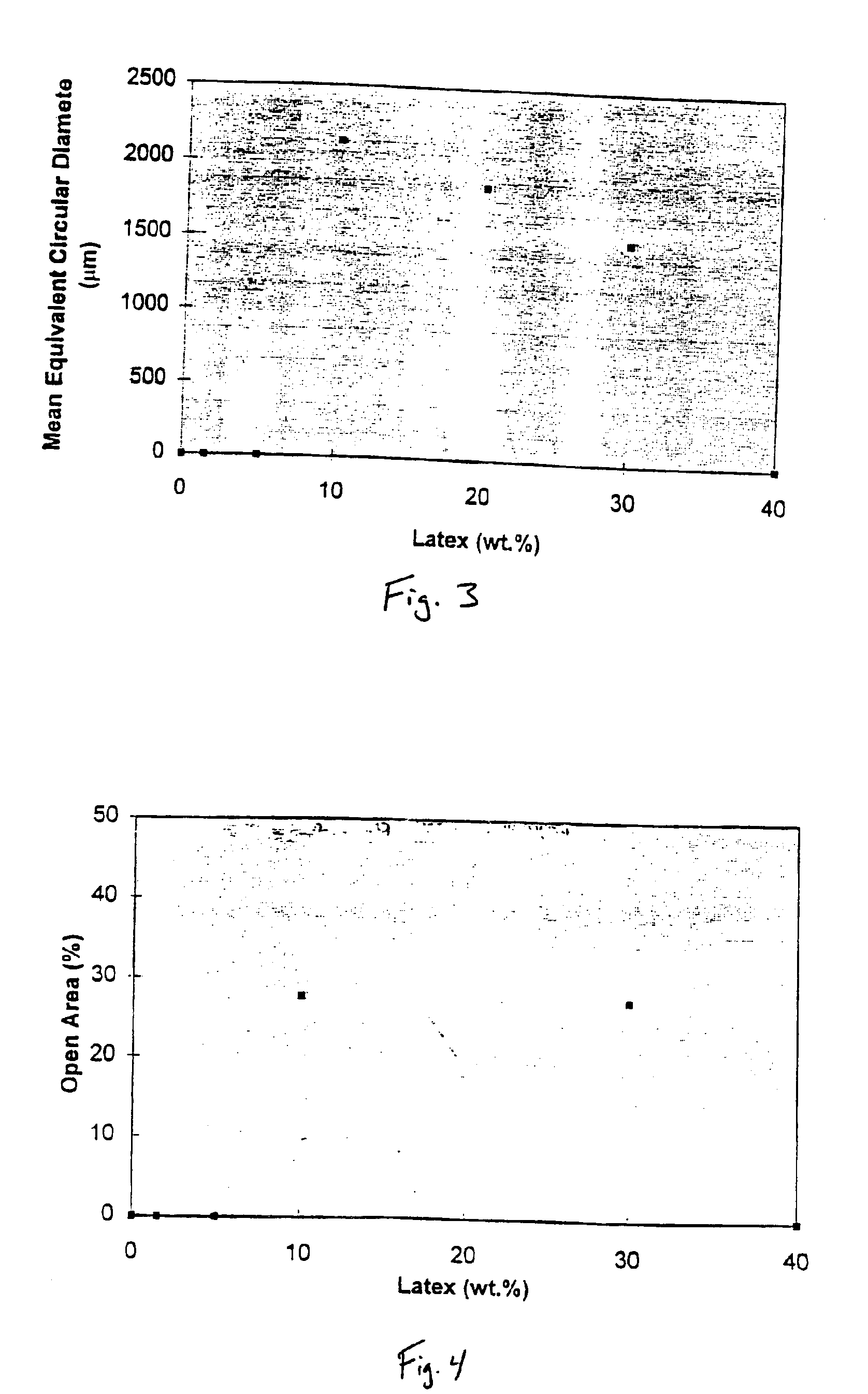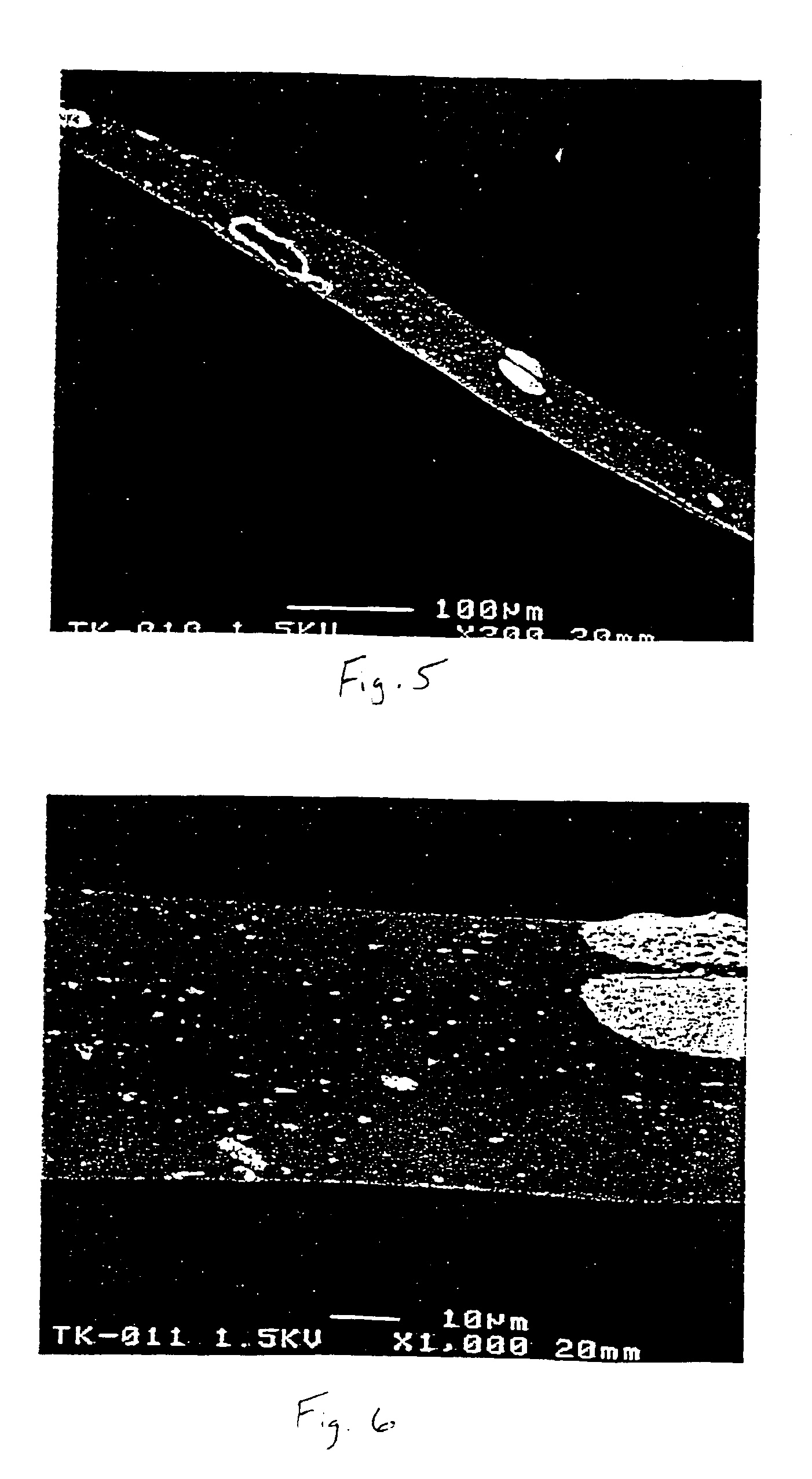Microphase separated superabsorbent compositions and method for making
a superabsorbent composition, microphase separation technology, applied in the direction of chemistry apparatus and processes, bandages, transportation and packaging, etc., can solve the problems of rigid and brittle superabsorbent compositions
- Summary
- Abstract
- Description
- Claims
- Application Information
AI Technical Summary
Benefits of technology
Problems solved by technology
Method used
Image
Examples
example 1
dding 302.51 g of a solution of 70% neutralized copolymer comprising 98% by mole of acrylic acid and 2% by mole of aminopropyl vinyl ether (collectively NPAA) and 2.03 g of SB 1168 latex emulsion. Due to the presence of water in both the superabsorbent solution and the latex emulsion the resulting dry weight of the NPAA was 72.6 g and the dry weight of the elastomer derived from latex emulsion was 1.15 g (equaling 1.5% by weight elastomer). The components were mixed in a Hobart mixer at setting #1 for 5 minutes to obtain a uniform mixture for film production. Examples 2-6 were made by the same procedure as Example 1 except that the actual weight percentage of the NPAA and the latex were different. The weights of the components of each example are listed in Table 1. A control film (Control) was also made from a NPAA superabsorbent precursor having no latex.
TABLE 1ExampleNo.NPAA Weight (g)Elastomer Weight (g)Elastomer (wt. %)Example 1302.512.031.5Example 2303.147.295Example 3303.7114....
examples 1-6
were made into thin films using an ACCU-LAB™ drawdown machine by Industry Tech (Oldsmar, Fla.). The film thickness was controlled the wire size on the steel bar. A sheet of BYTAC VF-81 Chemical Resistant TEFLON FEP® film from Norton Performance Plastics (Akron, Ohio) was adhered to the glass plate of the drawdown machine. A solution of about 2 grams of each of made into a film. The films were allowed to dry and the film compositions and thicknesses are summarized in Table 2.
TABLE 2ExampleFilm CompositionFilm ThicknessNo.(approx. dry weight ratio)(inch)MacroporousExample 11.5% Elastomer / 98.5% NPAA0.004NoExample 25% Elastomer / 95% NPAA0.003NoExample 310% Elastomer / 90% NPAA0.004YesExample 420% Elastomer / 80% NPAA0.003YesExample 530% Elastomer / 70% NPAA0.003YesExample 640% Elastomer / 60% NPAA0.004No
FIGS. 7-12 are photographs of the films of Examples 1-6 taken at a magnification of 3.8 times. FIG. 7 (Example 1), FIG. 8 (Example 2), and FIG. 12 (Example 6) show films not having macropores. FI...
PUM
| Property | Measurement | Unit |
|---|---|---|
| Fraction | aaaaa | aaaaa |
| Fraction | aaaaa | aaaaa |
| Fraction | aaaaa | aaaaa |
Abstract
Description
Claims
Application Information
 Login to View More
Login to View More - R&D
- Intellectual Property
- Life Sciences
- Materials
- Tech Scout
- Unparalleled Data Quality
- Higher Quality Content
- 60% Fewer Hallucinations
Browse by: Latest US Patents, China's latest patents, Technical Efficacy Thesaurus, Application Domain, Technology Topic, Popular Technical Reports.
© 2025 PatSnap. All rights reserved.Legal|Privacy policy|Modern Slavery Act Transparency Statement|Sitemap|About US| Contact US: help@patsnap.com



